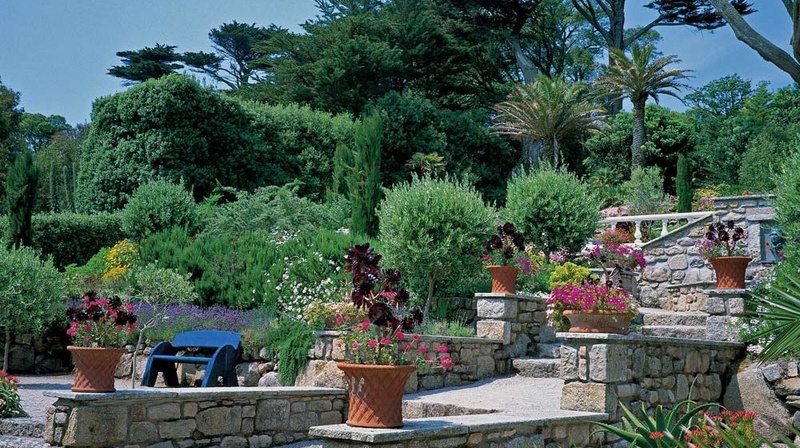
Che Bello! Create a Mediterranean Garden
Transform your ordinary Florida garden into a Tuscan wonderland. Welcome the low-maintenance, drought-tolerant, and dreamy design of a Mediterranean landscape and enjoy its modern look and peaceful mood. Select evergreens, fruit trees, herbs, and perennials. Install outdoor features like patios and pergolas.
Transform your ordinary Florida landscape into a Mediterranean daydream. Say goodbye to the never-ending mowing, pruning, and fertilizing requirements of traditional landscape design and welcome the modern, low-maintenance nature of a Mediterranean landscape.
Why Mediterranean?
The Mediterranean climate requires gardens and landscaping to be low-maintenance and drought-tolerant – perfect for homeowners who don’t want to spend hours every week doing lawn and garden maintenance. This style incorporates architectural plants that provide interesting shapes and textures and paving or gravel that create lovely walking and sitting spaces. These features together make a clean, modern feeling that is deceptively easy to maintain.
Choose Your Plants
Mediterranean gardens are focused on longevity. That is, selecting plants that will last and provide interest through the seasons. This includes evergreens that will hold their shape and offer consistent color, herbs like rosemary that can flower year-round, and shrubs and trees that flower or fruit seasonally.
As a rule of thumb, stick with a silvery-green color palette. Select several plants you can repeat throughout the landscape rather than planting a hodgepodge of colorful flowers, shrubs, trees, and more. Here are a few of our favorites:
- Fruit and citrus trees: olive, fig, Japanese persimmon, orange, lemon
- Evergreen: juniper, mastic, cypress, yucca, acacia
- Herbs: oregano, rosemary, basil
- Perennials: bougainvillea, agapanthus
As you make plant selections, keep in mind that Mediterranean gardens should not require lots of water or fertilizer; Mediterranean plants tend to do well in poor soil. These sun-loving plants should receive plenty of light throughout the day.
Mediterranean Landscaping Features
A key component of Mediterranean landscaping is the dry, mineral landscaping that fills the space between plants. This includes gravel, sand, and stone used for walkways and patios, and in place of turfgrass and mulch. Features include fountains, pergolas, and seating areas.
A Mineral Landscape: Gravel and Stone
Choose a warm-toned gravel color to complement the plants and other hardscape features. Keep plants and weeds from self-seeding and growing up through gravel by first installing landscape fabric over the soil. This is especially important in gardens where gravel is used in place of mulch.
Incorporate stone throughout the landscaping as you can. Install stone pavers to create a patio or stone walls in a terraced garden. Again, choose warm colors to channel authentic Mediterranean vibes.
Features: Seating, Fountains, and Shade Structures
Almost as a rule, Mediterranean gardens include seating areas for resting, eating, and enjoying time outside and with loved ones. Create or renovate a patio with space for a table and chairs; place a bench along a walking path in the garden.
Traditional Mediterranean landscapes are centered around courtyards and fountains. If this is beyond your budget, explore a small fountain or water feature, or choose an assortment of terra cotta pots and arrange plants in a group on a patio.
Like Italy, Florida gets its fair share of sun. Shade structures are not only beautiful but practical additions to your garden. Install a pergola and train flowering or evergreen climbers to create shade and fragrance above and around an intimate seating area.